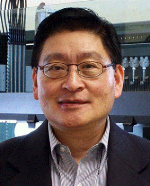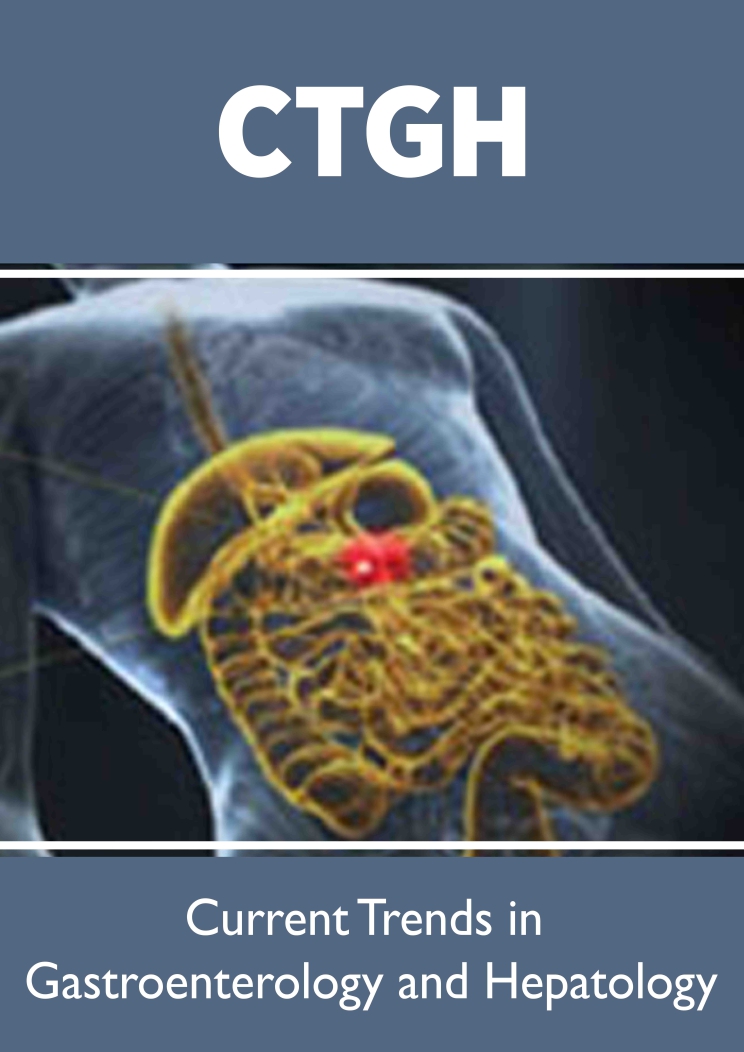
Lupine Publishers Group
Lupine Publishers
Menu
ISSN: 2641-1652
Mini Review Article(ISSN: 2641-1652) 
Stem Cell Therapy for Enhancing Endoglial Neuron Function Volume 4 - Issue 4
Alexander Manzano1*, Heliana Parra1
- 1Centro de Investigaciones Endocrino Metabólicas (CIEM), Universidad del Zulia
Received: August 24, 2024; Published: September 06, 2024
*Corresponding author: Alexander Manzano,Centro de Investigaciones Endocrino Metabólicas (CIEM), Universidad del Zulia
DOI: 10.32474/CTGH.2024.04.000192
Abstract
Stem cell therapy is emerging as a transformative approach in the field of regenerative medicine, offering promise for enhancing the function of endoglial neurons. These neurons are crucial to brain health and facilitate neural communication, making them an attractive target for therapy in neurological disorders. Various stem cell types, including embryonic stem cells (ESCs), adult stem cells, and induced pluripotent stem cells (iPSCs), are being explored for their potential to replace damaged tissues and promote neural recovery. The mechanisms of action include cell replacement, trophic support, immunomodulation, and angiogenesis. Several delivery methods, such as intracerebral injection, intrathecal administration, and intravenous infusion, are being investigated to optimize therapeutic outcomes. Clinical trials are underway for conditions such as Parkinson’s disease, Alzheimer’s disease, and spinal cord injuries, demonstrating the potential of stem cell therapy to restore neuron function. Despite the promise, challenges such as cell survival, immune rejection, and tumorigenicity must be overcome. This review underscores the advancements in stem cell therapy and the significant potential it holds for the future of treating neurological conditions.
Introduction
Stem cell therapy represents a promising frontier in the realm of regenerative medicine, particularly for treating various neurological disorders and enhancing the function of endoglial neurons. Endoglial neurons play an essential role in the brain’s microenvironment, facilitating communication among neural networks and supporting overall neural health. This innovative approach involves utilizing stem cells to regenerate or replace damaged neural tissues, including endoglial neurons, while simultaneously promoting a supportive environment conducive to the repair and maintenance of existing neuronal structures. As research in this field advances, it has become increasingly clear that harnessing the therapeutic potential of stem cells can lead to significant improvements in neuronal function and recovery from neurological injuries and disorders [1].
Types of Stem Cells Used
Numerous types of stem cells are currently under investigation for their potential in treating neurological conditions and enhancing the functionality of endoglial neurons. One of the most well-known categories includes embryonic stem cells (ESCs), which possess pluripotent characteristics that allow them to differentiate into virtually any cell type, including neurons and glial cells [1]. Despite their immense therapeutic potential, the use of ESCs is fraught with ethical concerns regarding their origin, particularly because they are often derived from human embryos. Another key category is adult stem cells, which encompasses both neural stem cells (NSCs) and mesenchymal stem cells (MSCs). NSCs can be isolated from specific regions of the adult brain, such as the subventricular zone, and have the ability to differentiate into various neural cell types, including neurons and glia [2]. On the other hand, MSCs have been derived from sources such as bone marrow and adipose tissue, showcasing neuroprotective and immunomodulatory properties that are advantageous for neural repair [3]. Furthermore, induced pluripotent stem cells (iPSCs) present another significant avenue of research; these are adult cells reprogrammed to an embryonic-like pluripotent state, empowering them to differentiate into myriad cell types, including functional neurons. This versatility positions iPSCs as a useful resource in potential applications for cell-based therapies aimed at neural restoration and rehabilitation.
Mechanisms of Action
Stem cell therapy can enhance the functionality of endoglial neurons through several critical mechanisms. The first mechanism involves cell replacement, where stem cells differentiate into new endoglial neurons or supportive glial cells, effectively replacing those that have been damaged or lost due to injury or disease. This process is crucial for restoring the balance and functionality within neural circuits, particularly in regions where neuronal loss has adversely affected communication and overall brain function. Additionally, stem cells offer trophic support by secreting a variety of growth factors and neurotrophins that promote neuronal survival, support axonal growth, and facilitate synaptic plasticity. These signaling molecules are vital in supporting the intricate processes essential for maintaining neural health and function, especially in environments impacted by injury or disease.
Moreover, immunomodulation represents another significant mechanism by which stem cells, particularly MSCs, can positively influence the neuronal environment. These cells have the ability to modulate the immune response, thereby reducing inflammation and creating a more favorable setting for neuronal repair and regeneration [3]. Importantly, certain stem cells can also stimulate angiogenesis, promoting the formation of new blood vessels and consequently improving blood supply to the injured neural tissues [3]. This increase in vascularity ensures that vital nutrients and oxygen are delivered efficiently, supporting healthy neuronal metabolism and function.
Administration Methods
The effective delivery of stem cells for enhancing endoglial neuron function can be achieved through various administration routes, each with its own benefits and limitations. One common method is direct intracerebral injection, which allows for precise targeting of specific brain regions where neuronal restoration is needed. This method is effective but is also invasive, requiring surgical procedures that come with inherent risks and complications. Another approach is intrathecal administration, where stem cells are injected into the cerebrospinal fluid surrounding the spinal cord. This provides a less invasive alternative for delivering stem cells throughout the central nervous system [4]. Such delivery can potentially enhance the dissemination of cells to the affected regions, enabling a broader therapeutic impact. Intravenous infusion is another less invasive method, although its efficacy largely depends on the cells’ ability to home to target tissues and engraft properly. Each of these administration methods must be carefully assessed in terms of their effectiveness, safety, and overall integration within the existing vascular and neural architecture to ensure optimal outcomes for the patients undergoing therapy.
Current Research and Clinical Trials
Current ongoing clinical trials are exploring the enormous potential of stem cell therapy for a range of neurological conditions, especially those conditions that could significantly benefit from enhancements in endoglial neuron functionality. For instance, in the context of Parkinson’s disease, early clinical trials utilizing ESC-derived dopaminergic neurons have demonstrated promising results in both animal models and initial human studies, indicating potential restoration of dopaminergic pathways crucial for motor function [1]. Similarly, in Alzheimer’s disease research, investigators are focusing on employing neural stem cells (NSCs) and MSCs to not only promote neurogenesis but also to combat inflammation that exacerbates neurodegenerative processes. The potential for stem cells to facilitate recovery after ischemic stroke is gaining traction, as numerous studies suggest their role in enhancing functional recovery and promoting neuroplasticity in the aftermath of a stroke [5]. For spinal cord injuries, diverse types of stem cells are being investigated for their ability to stimulate axonal regeneration and support functional recovery, fostering hope for those dealing with the devastating consequences of such injuries [6]. Collectively, this growing body of research underscores the rapidly expanding field of stem cell therapy and its capacity to address a wide array of neurological issues, ultimately offering new opportunities for intervention and rehabilitation.
Challenges and Future Directions
Despite the promise and potential associated with stem cell therapy, a range of challenges persist that must be addressed to optimize clinical outcomes. One primary concern relates to cell survival and integration; ensuring that transplanted stem cells persist and function effectively in the host tissue is crucial for achieving sustained therapeutic effects over time. The intricacies of the host environment play a crucial role in this process, as a hostile environment may hinder the successful engraftment and functionality of transplanted cells. Another challenge is tumorigenicity, especially with pluripotent stem cells, where there is a heightened risk of uncontrolled cell growth that may lead to tumor formation. Addressing this concern is paramount for the safe implementation of stem cell therapies, necessitating rigorous screening processes and regulatory oversight.
Immune rejection poses another significant hurdle, creating a need for effective strategies to prevent the host immune system from attacking the transplanted cells. Strategies in development include utilizing autologous cells derived from the patient, such as iPSCs, to reduce rejection risks while maximizing therapeutic efficacy. Additionally, determining optimal timing for intervention and establishing appropriate dosing regimens is essential, as both factors can significantly impact the effectiveness of the therapy. Future research should focus on defining these parameters to enhance clinical relevance and outcomes.
Conclusion
In conclusion, stem cell therapy holds significant promise for enhancing the function of endoglial neurons while addressing a variety of neurological disorders. As research progresses through ongoing clinical trials and laboratory studies, the anticipation for overcoming the existing challenges becomes more tangible. Continued refinement of therapeutic techniques will be vital in translating these innovative therapies from the research bench to bedside treatment options for patients. The potential to regenerate and repair neural tissue represents a beacon of hope for individuals grappling with previously untreatable conditions, making this a thrilling domain of ongoing research and future clinical application.
References
- Khan M, Ali SF, Javed H, Muzaffar S, Siddiqui C, et al., (2015) Potential of Neural Stem Cell-Based Therapy for Parkinson's Disease. The Scientific World Journal 571475.
- Hong Y (2016) Rapid generation of sub-type, region-specific neurons and neural networks from human pluripotent stem cells for neurological disorders. In Asia Pharma 5(2).
- Zhao M, Jin Y, Zhang S, Zhang Y, Guo J, et al., (2023) Effect of microenvironment modulation on stem cell therapy for spinal cord injury pain. Neural Regeneration Research, 20(1): 127-134.
- Xie C, Tang J, Chen L, Liu Z, Huang Y, et al., (2023) Neuronal Cell Differentiation of iPSCs for the Clinical Treatment of Neurological Disorders. Frontiers in Neuroscience, 17.
- Marrow A, Guedes CE, Suhr S, Yen CF (2022) Stem Cell Therapy in Ischemic Stroke. Journal of Stroke and Cerebrovascular Diseases, 31(11): 106649.
- Maeda Y, Yamamoto M, Morimoto T (2016) Effect of umbilical cord blood-derived mesenchymal stem cells on neurogenesis and functional recovery in a rodent model of spinal cord injury. Stem Cell Research, 6: 129-138.

Top Editors
-

Mark E Smith
Bio chemistry
University of Texas Medical Branch, USA -

Lawrence A Presley
Department of Criminal Justice
Liberty University, USA -

Thomas W Miller
Department of Psychiatry
University of Kentucky, USA -

Gjumrakch Aliev
Department of Medicine
Gally International Biomedical Research & Consulting LLC, USA -

Christopher Bryant
Department of Urbanisation and Agricultural
Montreal university, USA -

Robert William Frare
Oral & Maxillofacial Pathology
New York University, USA -

Rudolph Modesto Navari
Gastroenterology and Hepatology
University of Alabama, UK -

Andrew Hague
Department of Medicine
Universities of Bradford, UK -

George Gregory Buttigieg
Maltese College of Obstetrics and Gynaecology, Europe -

Chen-Hsiung Yeh
Oncology
Circulogene Theranostics, England -
.png)
Emilio Bucio-Carrillo
Radiation Chemistry
National University of Mexico, USA -
.jpg)
Casey J Grenier
Analytical Chemistry
Wentworth Institute of Technology, USA -
Hany Atalah
Minimally Invasive Surgery
Mercer University school of Medicine, USA -

Abu-Hussein Muhamad
Pediatric Dentistry
University of Athens , Greece

The annual scholar awards from Lupine Publishers honor a selected number Read More...


